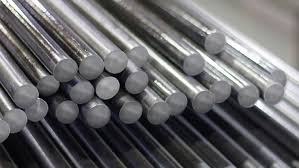
Why Choose Mild Steel 1020 for Your Next Fabrication?
Introduction
When it comes to fabrication, selecting the right material is crucial to achieving the desired results. 1020 Mild Steel , a popular choice in various industries, offers a combination of strength, ductility, and ease of fabrication. This article explores the properties, applications, and benefits of using 1020 Mild Steel in your next project.

What is Mild Steel 1020?
1020 Mild Steel is a low-carbon steel that contains approximately 0.20% carbon content. It is known for its excellent weldability, machinability, and versatility. Its composition typically includes iron, with small amounts of manganese and phosphorus, making it suitable for a variety of applications.
Chemical Composition
The chemical composition of 1020 Mild Steel is essential for understanding its properties. Below is a table that summarizes the primary elements found in 1020 Mild Steel .
| Element | Percentage (%) |
|---|---|
| Carbon | 0.18 – 0.23 |
| Manganese | 0.30 – 0.60 |
| Phosphorus | ≤ 0.04 |
| Sulfur | ≤ 0.05 |
| Iron | Balance |
Mechanical Properties of Mild Steel 1020
1020 Mild Steel exhibits a variety of mechanical properties that make it ideal for different fabrication processes. The following table outlines key mechanical properties.
| Property | Value |
|---|---|
| Yield Strength | 350 MPa |
| Tensile Strength | 400 – 500 MPa |
| Elongation | 15 – 25% |
| Hardness | 120 – 160 HB |
| Modulus of Elasticity | 200 GPa |
Advantages of Using Mild Steel 1020
Cost-Effectiveness
One of the most significant advantages of 1020 Mild Steel is its affordability. Compared to other metals like stainless steel or aluminum, Mild Steel 1020 is generally less expensive, making it a practical choice for budget-conscious projects.
Excellent Weldability
1020 Mild Steel is known for its excellent weldability, which allows for seamless integration into various structures. Whether you are working on complex assemblies or simple fabrication, the ability to easily weld 1020 Mild Steel can save time and labor costs.
Ductility and Malleability
Mild Steel 1020’s ductility and malleability enable it to be formed into various shapes without cracking. This property is particularly useful in applications requiring bending, rolling, or stretching.
Versatility
From automotive parts to construction materials, 1020 Mild Steel is utilized in a wide range of applications. Its versatility makes it suitable for many industries, including manufacturing, automotive, and construction.
Applications of Mild Steel 1020
1020 Mild Steel can be found in numerous applications, showcasing its adaptability and functionality. Some common uses include:
- Automotive Components: Used in chassis, frames, and other parts requiring high strength and ductility.
- Structural Steel: Employed in beams, columns, and trusses for buildings and bridges.
- Machinery Parts: Ideal for gears, shafts, and various machine components due to its machinability.
- Pipe and Tubing: Frequently used in the fabrication of pipes and tubes for fluid transport.
How to Fabricate with Mild Steel 1020

Cutting and Shaping
1020 Mild Steel can be easily cut using various methods, including shearing, sawing, or plasma cutting. Its ability to be shaped through processes like bending and rolling allows for efficient fabrication.
Welding Techniques
When welding 1020 Mild Steel , various techniques can be employed, including MIG, TIG, and stick welding. The choice of welding method will depend on the specific application and the desired finish.
Surface Treatment
To enhance the durability of 1020 Mild Steel , surface treatments such as galvanization, painting, or powder coating can be applied. These treatments protect against corrosion and improve the overall lifespan of the fabricated component.
Conclusion
In summary, 1020 Mild Steel stands out as an excellent choice for various fabrication projects. Its cost-effectiveness, excellent weldability, and versatility make it a reliable option across multiple industries. Whether you are involved in automotive, construction, or manufacturing, Mild Steel 1020 can meet your needs effectively.
FAQ
What is the difference between Mild Steel 1020 and other types of mild steel?
Mild Steel 1020 has a specific carbon content (0.18 – 0.23%) that distinguishes it from other mild steels, which may have varying carbon levels. This affects its strength, hardness, and overall performance.
Can Mild Steel 1020 be heat-treated?
Yes, Mild Steel 1020 can be heat-treated to improve its mechanical properties. Processes such as annealing or quenching can enhance its strength and hardness.
Is Mild Steel 1020 suitable for outdoor applications?
While Mild Steel 1020 is versatile, it is susceptible to corrosion. Therefore, if used outdoors, protective coatings or treatments should be applied to prevent rusting.
What industries primarily use Mild Steel 1020?
Mild Steel 1020 is widely used in industries such as automotive, construction, manufacturing, and machinery due to its adaptability and strength.
How do I ensure quality when fabricating with Mild Steel 1020?
To ensure quality, always source your materials from reputable suppliers. Conduct inspections for any defects and follow industry standards during fabrication processes.
By understanding the properties, advantages, and applications of Mild Steel 1020, you can make informed decisions for your next fabrication project. Whether you’re a seasoned engineer or a DIY enthusiast, this material can provide the reliability and performance you need.






